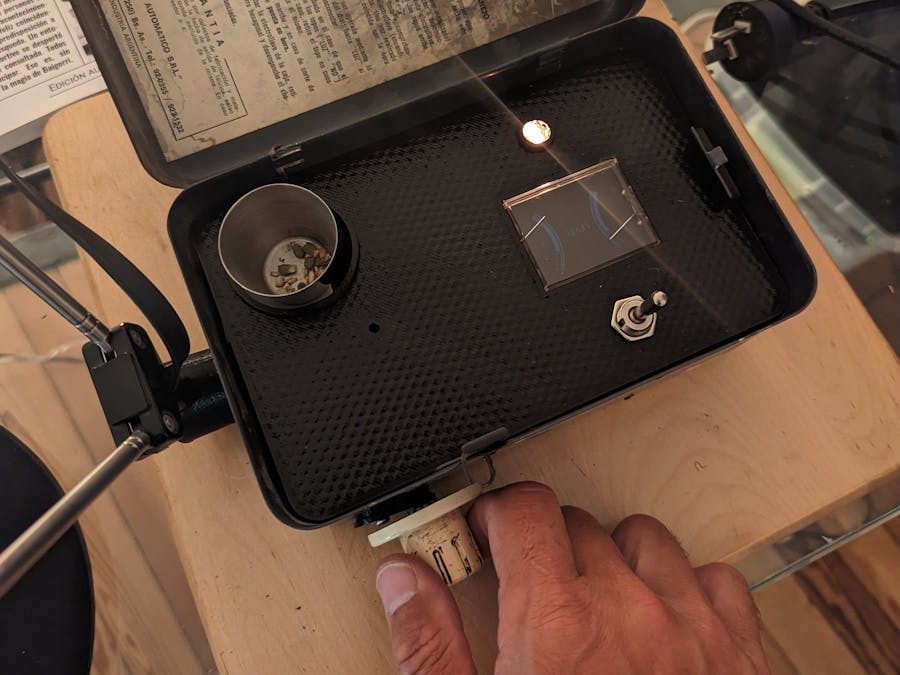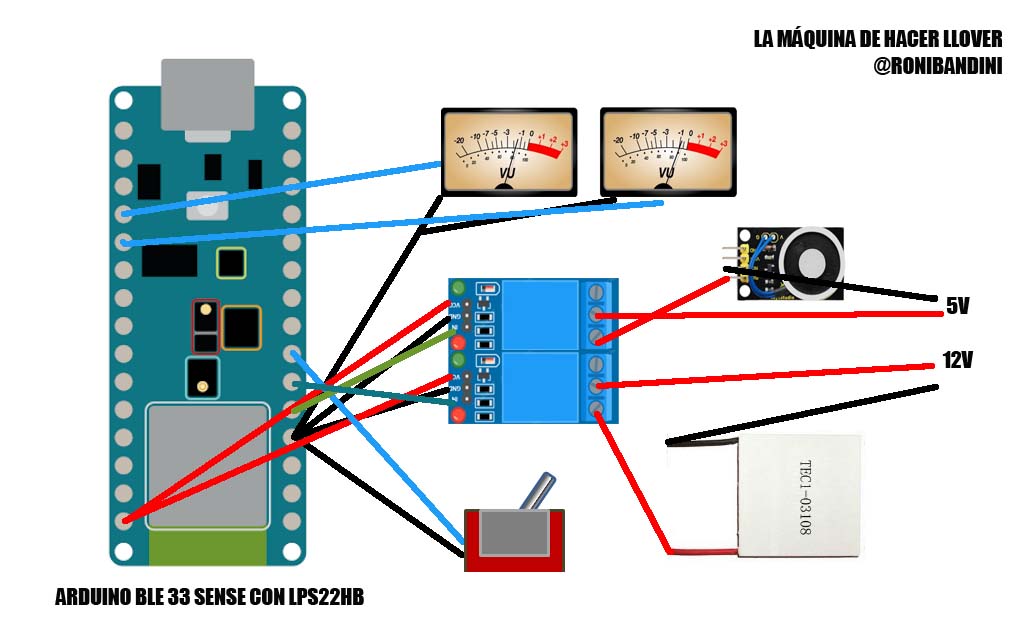In 1926, an engineering student from Argentina named Juan Baigorri Velar claimed to have invented a rainmaking machine. It all started when he was testing a custom made device to detect minerals by analyzing magnetic waves. Whenever he turned the device on, an inexplicable drizzle appeared.
He enhanced and tuned the machine and offered his rain making services for dry zones like Santiago del Estero and San Juan, with a high success rate according to thenewspapers.
Then, his popularity slowly faded away and the machine was never found.
Is pluviculture (attempt to induce rain artificially) even possible?
What makes it rain?“Precipitation is any liquid or frozen water that forms in the atmosphere and falls back to the earth.
Precipitation forms in the clouds when water vapor condenses into bigger and bigger droplets of water. When the drops are heavy enough, they fall to the earth. Most rain actually begins as snow high in the clouds. As the snowflakes fall through warmer air, they become raindrops.
Particles of dust or smoke in the atmosphere are essential for precipitation. These particles, called condensation nuclei provide a surface for water vapor to condense upon. This helps water droplets gather together and become large enough to fall to the earth.”
In Civil War times, after gunpowder battles, rain was very likely to happen. Some scientists took note and tried to induce rain using different methods. Charles Mallory Hatfield, a US inventor, for example, mixed 23 secret chemicals in large galvanized evaporating tanks. Juan Baigorri Velar used chemicals, radioactive substances and electromagnetism.
Even when chemicals and radioactive details were secret in both cases, in the book Baigorri Hacía Llover, I learned some hints and technical details and I decided to create a version of his rain making machine just as a playful tribute, without any expectation to generate a single drop.
What do we know about Baigorri Velar’s machine?“While I was using a radiomagnetic device searching for petroleum or water, an unknown wave was found that I started to call creole wave. It is an electromagnetic wave that goes from north to south”
“The machine needs an antenna to get atmospheric waves. These waves influence chemical and radioactive substances. Then, a selection is made, leaving the <<creole wave>> separate from others. And an atmospheric compression is made. The device should work approximately 50 hours to get rain”
“I could not tell you more than there is a combination of 5 radioactive metals fortified in his action by chemical substances”
These quotes, translated from the book Baigorri hacía llover, were published as textual press statements. They are generic, kind of cryptic and not scientific rigorous but some data could be extracted.
So atmospheric waves acting over a secret mix of radioactive metals and chemicals... There was also electromagnetism and an antenna.
Maybe not but let's will give it a try.
I’ve decided to use Arduino Nano BLE 33 Sense due to the on board LPS22HB barometer (atmospheric waves). Atmospheric pressure is obtained in hectopascals, stored every minute and then compared to detect meaningful drops. According to these readings, electromagnetism and heat over a stainless steel cup to contain chemicals is enabled. Heat is produced by a 12v Peltier Cell and both electromagnetism and heat are controlled by a 2 channel relay.
A little information about atmospheric pressure
“Atoms and molecules in the air move constantly, in all directions. This movement creates what meteorologists measure as air pressure. In high-pressure systems, the molecules inside the system move faster than those that surround it. The opposite occurs in low-pressure systems, where the air inside the low is moving more slowly than in the surrounding area. Meteorologists do not define a set pressure for highs or lows. Instead, they define the system by comparing the pressure inside the system to the pressure outside it… Humidity in the rising air of a low-pressure system condenses into water droplets. Once enough moisture collects in the clouds above a low-pressure system, it falls to the ground as precipitation. When temperatures warm, rain is the result.”Chemicals and operations
What about the chemical radioactive mix? A possible gunpowder formula (Civil war, after battle rain...) is 75% nitrate, 15% charcoal, 10% sulfur, but I did prepare a mix of charcoal 30% and phosphorus 70%, mainly for availability due to Argentine asado grill - the best worldwide, really :)
I did not use radioactive materials for obvious reasons (No access + a little Chernobyl fear)
The machine has a small filament light bulb and an analog 2 channel vu meter. The light bulb is related to the 5V power supply (BTW, the original machine was not connected to any power supply. The power allegedly came from the antenna).
The vu meters are used to display pressure and a custom rain forecast over pressure drops. For the enclosure I have found an old timer clock Paragón 5002 plate that was just perfect.
- Arduino Nano BLE 33 sense with on board barometric sensor
- 12v 60 watts Peltier Cell
- Electromagnet
- 2 x channel relay module1 Toggle switch
- 1 Rotary Switch
- 2 analog vumeters
- 1 5v lightbulb
- 12v Power Supply
- 5v Power Supply
Pressure
// read sensor value
float pressure = BARO.readPressure()*10;
// print sensor value
Serial.println("Presión atmosférica = " + String(pressure)+ "hpa");
// map for Vumeter
presValue = map(pressure, 1000, 1030, 0, vumeterLimit);
// store in array
lecturasPresion[counterPresion]=pressure;
counterPresion++;Heat and electromagnetism
// turn on Electro
Serial.println("...Electromagnetismo activado");
digitalWrite(electroPin, LOW);
if (lluviaProbable==true) {
delay(electroDelay*5);
}
else{
delay(electroDelay*10);
}
digitalWrite(electroPin, HIGH);
Serial.println("...Electromagnetico desactivado");
// turn on Peltier
Serial.println("...Combustión de sustancias activada");
digitalWrite(peltierPin, LOW);
if (lluviaProbable==true) {
delay(heatDelay*5);
}
else{
delay(heatDelay*10);
}
digitalWrite(peltierPin, HIGH);
Serial.println("...Combustión apagada");Simple pressure variation function
// iterate array
for (byte i = 0; i < 60; i = i + 1) {
Serial.println(String(lecturasPresion[i])+ ":" + String(currentPressure)+" >"+String(currentPressure-lecturasPresion[i]));
if (lecturasPresion[i]>0 and currentPressure-lecturasPresion[i]>pressureLimit){
toReturn=true;
Serial.println("+");
}
}Could this rain making machine work with the correct combination of chemicals and radioactive materials? Could it work with a huge electromagnet and massive chemical evaporation? Was the entire Baigorri Velar case a hoax? Did I turn on the argentine rainmaking machine on my roof and it rained two days ago?
Who knows. Sometimes having good questions is good enough.
Rainmaking machine in Maker Counterculture talk
https://blog.arduino.cc/2023/02/28/recreating-a-century-old-argentinian-rainmaking-machine/
Referenceshttps://www.jstor.org/stable/25102256
https://www.jstor.org/stable/40487683
https://www.history101.com/juan-velar-rainmaking-device
https://www.theepochtimes.com/the-rainmaking-machine_291587.html
https://www.mandolinalibros.com/productos/huberman-diego-baigorri-hacia-llover/
https://sciencing.com/barometric-pressure-rise-fall-rains-23043.html
https://education.nationalgeographic.org/resource/precipitation/
https://cen.acs.org/articles/94/i22/Does-cloud-seeding-really-work.html
https://www.accuweather.com/en/weather-news/what-is-a-low-pressure-area/433451
















_t9PF3orMPd.png?auto=compress%2Cformat&w=40&h=40&fit=fillmax&bg=fff&dpr=2)


Comments
Please log in or sign up to comment.